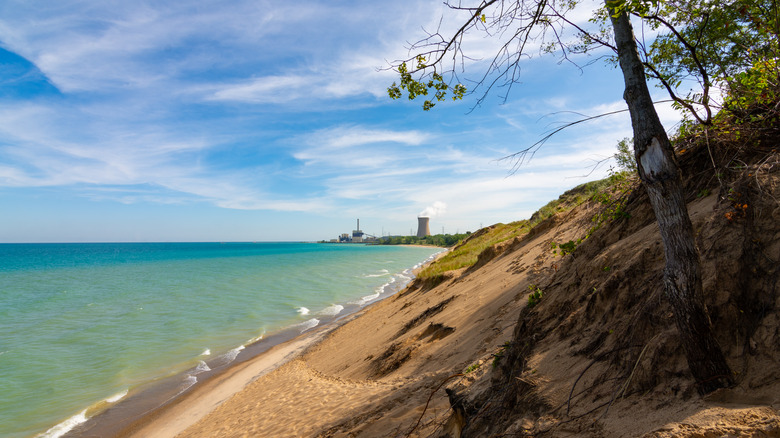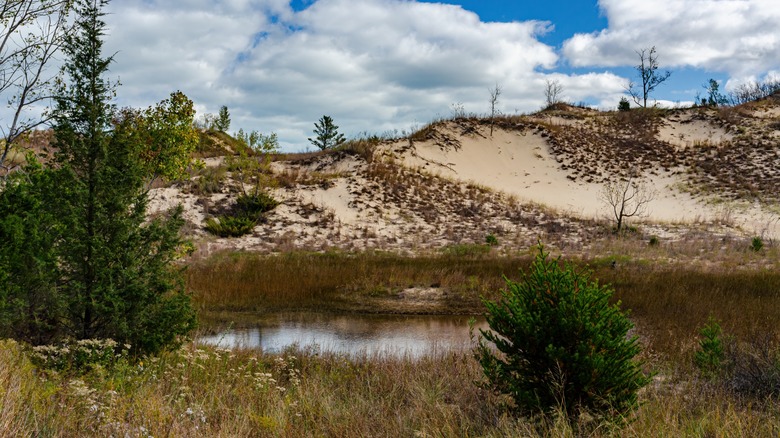One Of America's Largest Moving Sand Dunes Is A Mysterious Phenomenon On Indiana's Coast
On a sunny July day in 2013, 6-year-old Nathan disappeared during a hike on Mt. Baldy, a dune inside Indiana Dunes National Park. He had dropped through the dune and was trapped. As his friends and family were on their knees, digging the sand, the hole collapsed. It wasn't a sinkhole, though — it was as if a void just opened up and swallowed the boy. Fortunately, after digging for hours through hundreds of tons of sand, a rescue team found Nick — alive. Since his miraculous disappearance and equally stupefying survival, Mt. Baldy's moving dune has puzzled and intrigued scientists.
The 126-foot tall Mt. Baldy dune has long been legendary as a "wandering" or "migrating dune." Like other living dunes, it moves a little each year. Despite its mysterious nature, Baldy is a popular weekend getaway where families often camp, swim in Lake Michigan, and trek up the dune to admire the Chicago skyline from afar. The hike's popularity is what likely led the dune to become unmoored — the thousands of feet pounding it degraded the marram grass that stabilized it. Without the roots of vegetation to keep it in its place, the dune began to move alarmingly fast — about 5 to 10 feet per year, according to scientists with Indiana University Northwest. That giant mound of moving sand buries everything in its path, including trees. A submerged tree most likely created the sinkhole that swallowed Nathan. Smithsonian Magazine speculates that the boy survived his ordeal because the decomposed tree trunk created a pocket of air, which provided him with enough oxygen until he was found.
The massive wandering dune beside Lake Michigan is currently closed to the public. Park staff are planting grass and establishing wind breaks to stabilize the dune. Rangers still lead select tours to the summit, though.
Hiking and camping in Indiana Dunes National Park
Luckily for dune enthusiasts, there are still many dune hikes in the Indiana Dunes National Park. You have to pay to enter the park (except on select days when all national park admission is free). Once you're inside, trek the Diana of the Dunes Dare, a challenging mile-long path with 270 stairs. The trail rewards hikers with a spectacular view of Lake Michigan. Or you could trek along the Cowles Bog Trail, a 4.5-mile path through wetlands, forested dunes, and beaches where you might find wetland birds like the American bittern and sandhill crane.
If you're not into hiking, you could instead choose from many beaches and spend a lazy afternoon lounging and swimming. West Beach is the most popular spot for swimming. It has a sandy area and bathing facilities. You can climb up the Succession Trail to soak up the panorama vistas and see the rich vegetation that helps form the dunes (and keep them in place). Kemil Beach is another great spot for swimming, sunbathing, and picnicking. For more lakeside fun, head to the hidden resort town of Beverly Shores, around 6 miles away from Indiana Dunes National Park.

